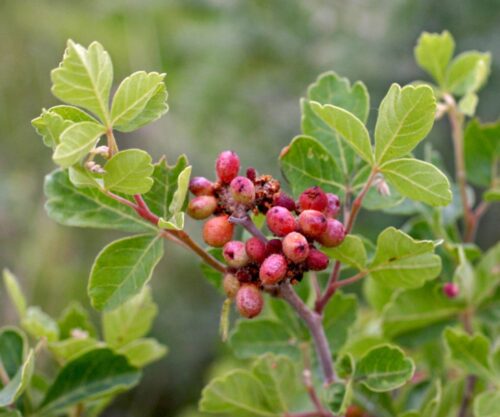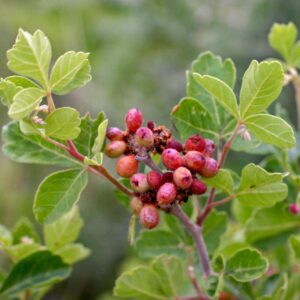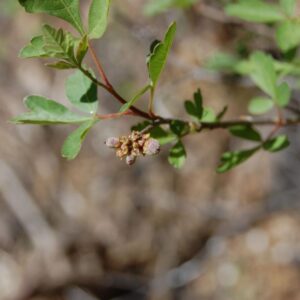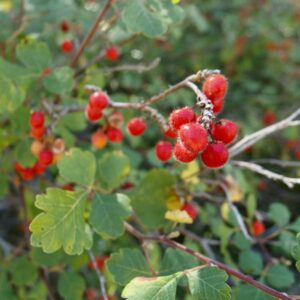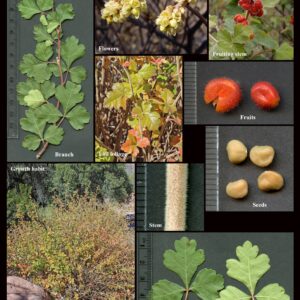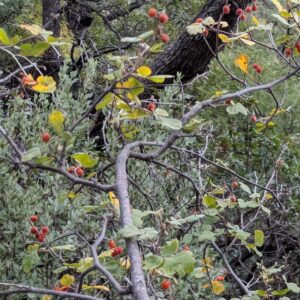Lemonadeberry, Fragrant Sumac
Rhus aromatica
Details & Attributes
| Plant Type(s) | Shrub |
| Native to Arizona | Yes! |
| Water Needs | Low |
| Sun | Full sun, partial shade |
| Pollinators | Bees, butterflies, attracts birds to the fruit |
| Has Spines | No |
| Size In relative feet, width by height |
4-6 × 4-5 |
| Freeze Tolerant | Yes |
| Flowering Season | March-August |
| Flower Color | White/greenish |
| Minimum Temperature Range | -20 °F |
| Leaf Description | Typically three lobed and covered in soft hairs. Foliage has a musty pungency |
| Fruit | Tart, red, berry |
| View on SEINet | View SEINet Entry |
| Range Map | View SEINet Range Map |
| Elevation Range | 2500-7500 ft. |
| Description | This is a smaller sumac with thin, flexible branches arising from the base. Because this species is decidous (losing it's leaves annually) it is ideally planted with evergreen species like oaks (Quercus spp.), desert spoon (Dasylirion wheeleri), beargrass (Nolina microcarpa), and Arizona rosewood (Vauquelinia californica). This is probably our most widespread native sumac and can be grown in most localities in Arizona but plants in lower desert climates will benefit from generous irrigation and partial shade. At higher elevations this sumac can go in full sun. The berries are great bird attractors, making this an excellent addition to a wildlife garden. Cold or drought tolerance are likely to be slightly different depending on where the seed was collected from so it may be worth checking with your local nursery to get a sense of the provenance of their germplasm |


